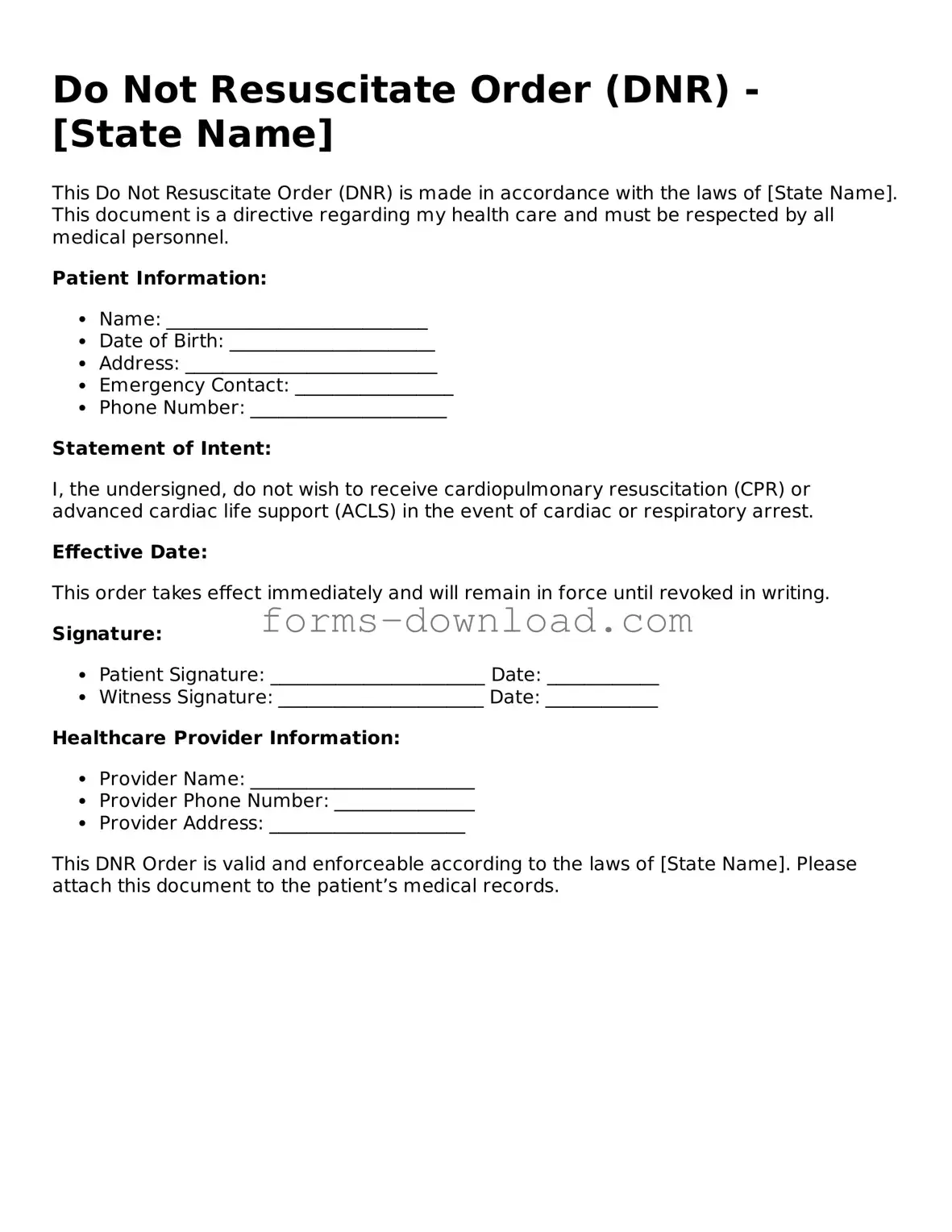Do Not Resuscitate Order (DNR) - [State Name]
This Do Not Resuscitate Order (DNR) is made in accordance with the laws of [State Name]. This document is a directive regarding my health care and must be respected by all medical personnel.
Patient Information:
- Name: ____________________________
- Date of Birth: ______________________
- Address: ___________________________
- Emergency Contact: _________________
- Phone Number: _____________________
Statement of Intent:
I, the undersigned, do not wish to receive cardiopulmonary resuscitation (CPR) or advanced cardiac life support (ACLS) in the event of cardiac or respiratory arrest.
Effective Date:
This order takes effect immediately and will remain in force until revoked in writing.
Signature:
- Patient Signature: _______________________ Date: ____________
- Witness Signature: ______________________ Date: ____________
Healthcare Provider Information:
- Provider Name: ________________________
- Provider Phone Number: _______________
- Provider Address: _____________________
This DNR Order is valid and enforceable according to the laws of [State Name]. Please attach this document to the patient’s medical records.
